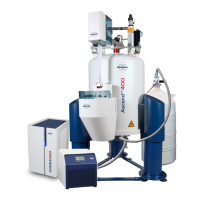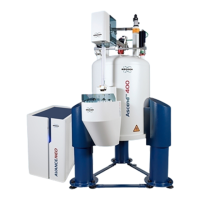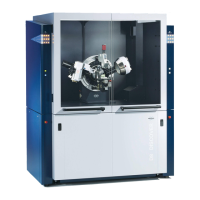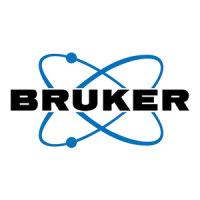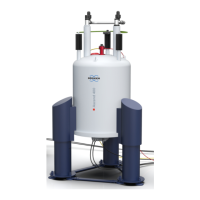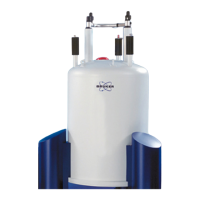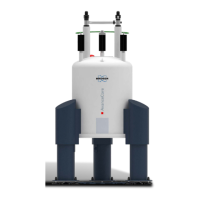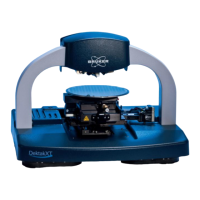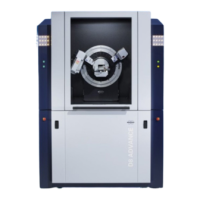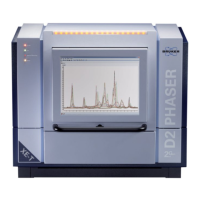Environment and Site Survey Measurement
54 H157655_1_008
7.3.3 AC EMF Interference
In high resolution NMR AC disturbances in the frequency range of 1Hz to several 100 Hz
cause modulation sidebands in NMR spectra, as long as the disturbance frequency is equal
to or larger than the line width. As long as these sidebands are small in amplitude they
disappear in the noise floor. Above 1 Hz, the most prominent disturbances usually originate
from electrical power and devices that rotate/move with the according frequencies (16-2/3 Hz
and 50/60 Hz and harmonics). But also other field components at other frequencies may be
present in laboratory environments.
Typical sources for 16-2/3 Hz interferences are long distance trains and/or streetcars.
Likewise, the 50/60 Hz interferences have their sources in electrical wiring, transformers and
fluorescent lights located in the vicinity of the NMR spectrometer.
7.3.3.1 Measuring AC EMF Interferences
AC EMF measurements should be conducted using a 3-axis fluxgate magnetometer placed
at the location of the planned magnetic center and console. The fluxgate sensors must be
capable to accurately measure fields in the range ±100 µT (or better ±1 mT in a laboratory
with unshielded magnets). The quality of the fluxgate sensors and acquisition system should
result in accuracy better than 5 nT. The senor signals are recorded with an analog data
acquisition system at a sampling rate of 2’500 S/s or more. The data is block-wise (4
seconds) processed: digital LP -filter with fc = 225 Hz, subsampled to 500 S/s, FFT (200 Hz
band width and 0.25 Hz resolution). The single block magnitude spectra are used to compute
average and peak-hold spectra as well as spectrograms (waterfall plots) reflecting the
evolution of AC EMF spectral content over time. Measurements should be performed when
possible sources are in operation. Typically this results in a measurement during a full
working day (9 to 17). In addition, an over-night measurement is recommended to separate
singularities from constantly present interferences.
The measurement of DC and AC EMF interference can be performed with the same
hardware (fluxgates). The recorded waveform is processed in different ways.
In case large disturbances are detected at the planned magnet center or the console area,
specific locations must be checked to identify possible sources such as:
• Along the wall inside the laboratory at 5 cm (~2”) from wall, and 3.8 cm (4”) from wall
• Approximately 5 cm (~2”) below the existing lights in the room
• Near the main outlets 230V (USA - 208V) locations in the room
• Neighboring rooms and installed machines/devices in there.
• The paths towards tram, train, subway lines, power stations, etc.
Based on the results, a strategy to reduce AC interferences can be worked out (see
Reducing AC EMF Interference [}55])
7.3.3.2 Guidelines for AC EMF Interference
Between 1 Hz and 10 Hz: NMR systems are usually more sensitive to external disturbances
in this frequency range. It is suggested to stay below a straight line defined by 70 nT at 1 Hz
and 700 nT at 10 Hz in a log/log magnitude/frequency plot. These are 0 to peak values. See
figure below.
